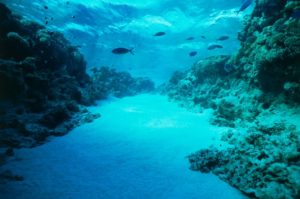 Most people do not think about the fact that we have to know so much about our world and a lot of it comes through mapping it out. There are people devoted to mapping our oceans, our lands, and even what may be within the Earth’s core. Each part of mapping the Earth is important. We gain massive amounts of information from each new area mapped out.
Most people do not think about the fact that we have to know so much about our world and a lot of it comes through mapping it out. There are people devoted to mapping our oceans, our lands, and even what may be within the Earth’s core. Each part of mapping the Earth is important. We gain massive amounts of information from each new area mapped out.
What We Discover by Mapping Oceans
It is pretty easy to see why we map landmasses. How else would we get where we are going if we didn’t have a map that could guide us? This does not help us when we are in the ocean does it? The truth is, we can learn massive amounts of information by looking deep into the ocean.
The biggest benefit of mapping the ocean is that we can study areas of shallow water, which can be very useful in telling where it is safe for ships to travel. It ensures that they do not hit land. Beyond the safety and defense of the US, we also need to understand the waterways and how it may impact the weather.
For instance, a tsunami is caused by an earthquake that takes place in the ocean. Plates shift and waves form. It can wipe out entire areas. The best way to try and know when or if it may happen is to know where fault lines may be located.
The problem is, it is difficult to map the ocean and it can be time-consuming. Therefore, we still do not know everything that we can learn based on the bottom of our ocean floors.
What Do We Learn From Mapping Land?
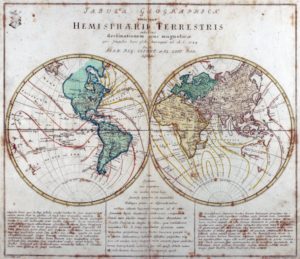 Land mapping is a little easier to see and understand. We map land so that we can see how large it is, where borders and boundaries are, how to travel from here to there, and more. Mapping makes it easy for us to see where mountains are located as well as other features of our Earth.
Land mapping is a little easier to see and understand. We map land so that we can see how large it is, where borders and boundaries are, how to travel from here to there, and more. Mapping makes it easy for us to see where mountains are located as well as other features of our Earth.
For this reason, the idea of mapping has been something we have done since ancient Greek and Roman times. For as far back as we have been researching our history, there have been those who wanted to map things out to see what was there. Now, we have more high-tech mapping abilities, but it does not change that some of the information on our maps today began with them.
What you may not consider is that you can also learn more. We can see settlement patterns. With thermal mapping, we can see where there is a higher risk of pollution in the atmosphere. There are several different types of maps and we can learn a little more about our world with each one.
Our Earth’s Core? Mapping It Matters, Too!
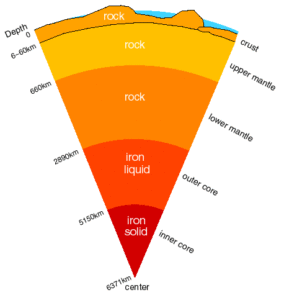 We know that Earth is made up of four layers. In the core, we have a solid iron ball. It measures about 1,500 miles in diameter. It is extremely hot and estimates are that it is approximately 9,000 and 13,000 degrees Fahrenheit. It is surrounded by a liquid iron shell that is around 1,400 miles thick. It is what keeps us on our magnetic center.
We know that Earth is made up of four layers. In the core, we have a solid iron ball. It measures about 1,500 miles in diameter. It is extremely hot and estimates are that it is approximately 9,000 and 13,000 degrees Fahrenheit. It is surrounded by a liquid iron shell that is around 1,400 miles thick. It is what keeps us on our magnetic center.
The next layer is the mantle. It is around 1,800 miles thick and divided into the upper and lower mantle. In the mantle, you will discover molten rock flowing in a slow-moving river. You may know it better as molten lava, but it is actually rock.
Currents within this mantle are broken into blocks or plates. They move around and occasionally collide to build mountains and other things.
The crust of one of those plates is what forms the continents that we live in. It is the river beds and ocean floors. This is the easy stuff to learn about. The inner stuff can only be done through studying movements on the crust.
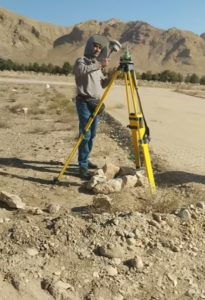 At the core of the profession are the mapping tools themselves—GPS units, total stations, drones, and rugged tablets designed to withstand harsh conditions. High-accuracy GPS receivers, sometimes capable of sub-centimeter precision, are indispensable when creating detailed land surveys or mapping environmental features. Rugged tablets and mobile data collectors allow surveyors to record data in real time, even in rain, dust, or extreme temperatures. For areas with challenging terrain or limited accessibility, drones have become one of the most transformative tools. They provide aerial imagery, 3D modeling, and rapid site assessments while reducing the need for extensive ground travel. Laser rangefinders, compasses, and old-fashioned notebooks still play an important role as well, especially when the technology encounters limitations or when redundancy is essential.
At the core of the profession are the mapping tools themselves—GPS units, total stations, drones, and rugged tablets designed to withstand harsh conditions. High-accuracy GPS receivers, sometimes capable of sub-centimeter precision, are indispensable when creating detailed land surveys or mapping environmental features. Rugged tablets and mobile data collectors allow surveyors to record data in real time, even in rain, dust, or extreme temperatures. For areas with challenging terrain or limited accessibility, drones have become one of the most transformative tools. They provide aerial imagery, 3D modeling, and rapid site assessments while reducing the need for extensive ground travel. Laser rangefinders, compasses, and old-fashioned notebooks still play an important role as well, especially when the technology encounters limitations or when redundancy is essential.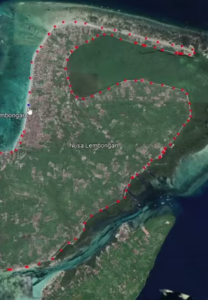 Because this work often takes place in forests, deserts, mountains, wetlands, or other undeveloped regions, surveyors must carry tools that go beyond mapping technology. Field boots, durable clothing, sun protection, power banks, portable solar chargers, and first-aid kits are standard gear. Many locations lack reliable cell service or nearby supply points, meaning that surveyors must be able to stay in the field for extended periods. This requires careful planning not only for equipment but also for food, hydration, and temperature management.
Because this work often takes place in forests, deserts, mountains, wetlands, or other undeveloped regions, surveyors must carry tools that go beyond mapping technology. Field boots, durable clothing, sun protection, power banks, portable solar chargers, and first-aid kits are standard gear. Many locations lack reliable cell service or nearby supply points, meaning that surveyors must be able to stay in the field for extended periods. This requires careful planning not only for equipment but also for food, hydration, and temperature management.
 When dredging occurs, the physical boundaries and depths of a water body are modified, often creating inconsistencies between pre-existing digital maps and the new on-the-ground reality. Since GIS relies heavily on static datasets and established topographical benchmarks, the rapidly shifting sediment and changing water levels can complicate efforts to maintain accurate spatial models. Even small-scale dredging or erosion can shift a shoreline by several feet, leading to discrepancies in land ownership boundaries, zoning regulations, or environmental protection zones. For developers and environmental planners, these inaccuracies can have costly consequences, including regulatory non-compliance, construction delays, or unintended ecological impacts. Furthermore, aquatic systems are influenced by a wide range of variables—such as rainfall, evaporation, sediment deposition, and biological growth—that continuously reshape their physical features. Capturing this variability in GIS requires frequent updates through field surveys, sonar mapping, and remote sensing, all of which demand significant time, financial resources, and technical expertise.
When dredging occurs, the physical boundaries and depths of a water body are modified, often creating inconsistencies between pre-existing digital maps and the new on-the-ground reality. Since GIS relies heavily on static datasets and established topographical benchmarks, the rapidly shifting sediment and changing water levels can complicate efforts to maintain accurate spatial models. Even small-scale dredging or erosion can shift a shoreline by several feet, leading to discrepancies in land ownership boundaries, zoning regulations, or environmental protection zones. For developers and environmental planners, these inaccuracies can have costly consequences, including regulatory non-compliance, construction delays, or unintended ecological impacts. Furthermore, aquatic systems are influenced by a wide range of variables—such as rainfall, evaporation, sediment deposition, and biological growth—that continuously reshape their physical features. Capturing this variability in GIS requires frequent updates through field surveys, sonar mapping, and remote sensing, all of which demand significant time, financial resources, and technical expertise. From a regulatory and environmental standpoint, GIS mapping inaccuracies in aquatic development can pose serious risks. Misrepresentation of wetlands, flood zones, or aquatic habitats can result in violations of environmental laws or unintentional damage to sensitive ecosystems. For instance, dredging operations based on outdated GIS data might encroach on protected zones or disrupt fish spawning areas. To address these challenges, developers and environmental scientists are increasingly turning to adaptive GIS models that incorporate real-time monitoring data, such as sensor-based water level readings or automated drone surveys. These technologies allow for more dynamic mapping, enabling continuous updates that reflect the true conditions of a site. However, implementing such systems requires not only advanced software and hardware but also skilled professionals capable of interpreting and managing complex datasets.
From a regulatory and environmental standpoint, GIS mapping inaccuracies in aquatic development can pose serious risks. Misrepresentation of wetlands, flood zones, or aquatic habitats can result in violations of environmental laws or unintentional damage to sensitive ecosystems. For instance, dredging operations based on outdated GIS data might encroach on protected zones or disrupt fish spawning areas. To address these challenges, developers and environmental scientists are increasingly turning to adaptive GIS models that incorporate real-time monitoring data, such as sensor-based water level readings or automated drone surveys. These technologies allow for more dynamic mapping, enabling continuous updates that reflect the true conditions of a site. However, implementing such systems requires not only advanced software and hardware but also skilled professionals capable of interpreting and managing complex datasets. There is something to be said for country living. Things are simpler, quieter, and more relaxing if you can ditch the city and spend your time in the country. Those who live in rural areas are able to experience these relaxation areas every day of their lives. They can farm, they can have pets without leashes, and more. The downside to it is the fact that they also need to discover efficient rural power source solutions. Otherwise, things can get messy pretty quickly.
There is something to be said for country living. Things are simpler, quieter, and more relaxing if you can ditch the city and spend your time in the country. Those who live in rural areas are able to experience these relaxation areas every day of their lives. They can farm, they can have pets without leashes, and more. The downside to it is the fact that they also need to discover efficient rural power source solutions. Otherwise, things can get messy pretty quickly. Often, people go to the country to escape their reality. They go camping in off the grid locations. They rave about the fact that they are embracing the simple life for a short time. When its over, they say that they cannot wait to go back. They like the freedom, the peaceful quiet, the crickets chirping. They see this side of it and nothing more. In many ways, this is how it is to live in the most rural areas. However, there is another side to this tranquility.
Often, people go to the country to escape their reality. They go camping in off the grid locations. They rave about the fact that they are embracing the simple life for a short time. When its over, they say that they cannot wait to go back. They like the freedom, the peaceful quiet, the crickets chirping. They see this side of it and nothing more. In many ways, this is how it is to live in the most rural areas. However, there is another side to this tranquility. The word, “downside” is a bit harsh, but it is kind of true. In Florida, or other coastal areas, where farms are located, a hurricane can wipe out power for weeks because rural areas are last on the list for repairs. During the summer months when storms roll in daily, power can potentially go out for a few hours. Then you must also consider that rural landowners could own acres of land. How do they work the fields in the “away from the home” areas or have a powered gate? It all ends up being a little tricky since most off-grid locations do still need power consistently.
The word, “downside” is a bit harsh, but it is kind of true. In Florida, or other coastal areas, where farms are located, a hurricane can wipe out power for weeks because rural areas are last on the list for repairs. During the summer months when storms roll in daily, power can potentially go out for a few hours. Then you must also consider that rural landowners could own acres of land. How do they work the fields in the “away from the home” areas or have a powered gate? It all ends up being a little tricky since most off-grid locations do still need power consistently. In today’s world, we have all learned the importance of using reclaimed wood. You take wood from a pallet to make other things or use wood from a dresser to create something new. You repurpose everything that you can, which ensures that it will remain useful for years to come. To learn more, read on to learn about 5 reclaimed wood uses that may surprise you.
In today’s world, we have all learned the importance of using reclaimed wood. You take wood from a pallet to make other things or use wood from a dresser to create something new. You repurpose everything that you can, which ensures that it will remain useful for years to come. To learn more, read on to learn about 5 reclaimed wood uses that may surprise you.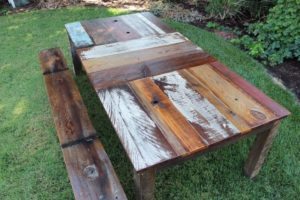 Some people love the look of wood ceilings. Either full wood slats running across the ceiling or simple wooden beams. These ceilings can make any room in your home look more rustic and beautiful. However, if you would rather not have the wood on your ceiling, the floor is always an option.
Some people love the look of wood ceilings. Either full wood slats running across the ceiling or simple wooden beams. These ceilings can make any room in your home look more rustic and beautiful. However, if you would rather not have the wood on your ceiling, the floor is always an option.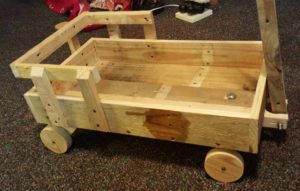 When working with reclaimed wood, not all pieces may be usable. You may have smaller pieces of wood leftover from previous projects. The beauty of this is that you can use those smaller pieces to create art. This is how mantles, shelves, and wooden shadow boxes come in. Using scraps of wood, you can create shelves that have large or small spaces. You can create window boxes for plants during the spring. The options and potential uses are endless.
When working with reclaimed wood, not all pieces may be usable. You may have smaller pieces of wood leftover from previous projects. The beauty of this is that you can use those smaller pieces to create art. This is how mantles, shelves, and wooden shadow boxes come in. Using scraps of wood, you can create shelves that have large or small spaces. You can create window boxes for plants during the spring. The options and potential uses are endless. There are a lot of beautiful things created with wood. Wood is loved for the creation of everything from end tables to bedroom suits. We aren’t talking about the fake wood, with wallpaper spread over it, but the beautiful natural type. The stuff that has been planed down to create a flat surface. These woods are also useful in our home and in more ways than you may realize. For instance, did you know that creating bowls from natural resources, like wood, is increasingly popular with many?
There are a lot of beautiful things created with wood. Wood is loved for the creation of everything from end tables to bedroom suits. We aren’t talking about the fake wood, with wallpaper spread over it, but the beautiful natural type. The stuff that has been planed down to create a flat surface. These woods are also useful in our home and in more ways than you may realize. For instance, did you know that creating bowls from natural resources, like wood, is increasingly popular with many?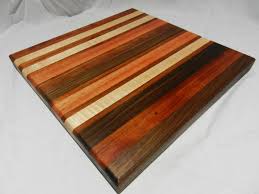 Think of a cutting board or a countertop in your kitchen. These items can be made from wood and set a very warmth to any kitchen area. The most popular types of wood for countertops are going to be walnut, teak, oak, maple, and more. Each one is beautiful, natural, and outstanding to work with.
Think of a cutting board or a countertop in your kitchen. These items can be made from wood and set a very warmth to any kitchen area. The most popular types of wood for countertops are going to be walnut, teak, oak, maple, and more. Each one is beautiful, natural, and outstanding to work with.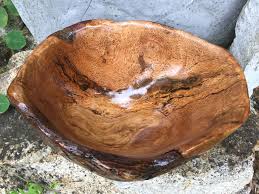 Have you ever gone to a restaurant and noticed that they served salad in a wooden bowl? Often, they can still be plastic, but they look awesome. In other cases, they may be made using maple, cherry, or black walnut. Creating bowls from wood isn’t always easy. You have the option to simply carve out a bowl or use the burls of a tree.
Have you ever gone to a restaurant and noticed that they served salad in a wooden bowl? Often, they can still be plastic, but they look awesome. In other cases, they may be made using maple, cherry, or black walnut. Creating bowls from wood isn’t always easy. You have the option to simply carve out a bowl or use the burls of a tree.